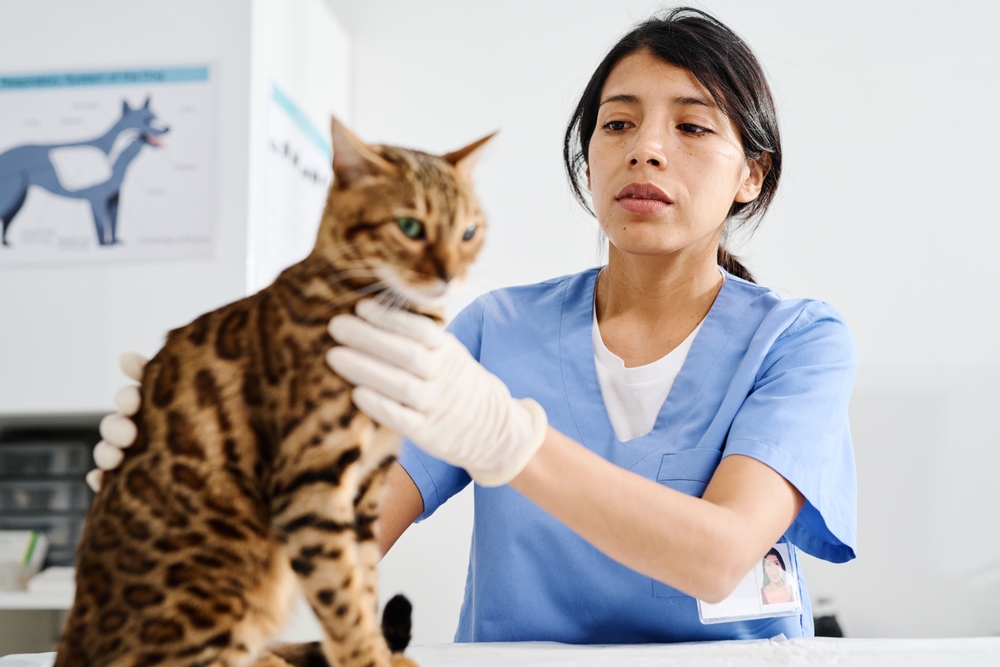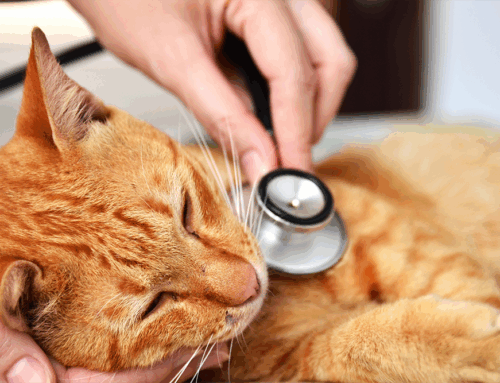Understanding Chronic Kidney Disease in Cats
Chronic Kidney Disease (CKD) is a prevalent condition in cats, especially as they age. It involves a gradual decrease in kidney function, which can significantly impact a cat’s overall health. The kidneys play a crucial role in filtering waste products from the blood, regulating blood pressure, and balancing electrolytes and fluids.
What is Chronic Kidney Disease (CKD)?
CKD in cats is a progressive disease that can be managed but not cured. Over time, the kidneys lose the ability to effectively filter waste products from the blood, leading to a buildup of toxins that can affect your cat’s health. Without treatment, the accumulation of these toxins can result in severe complications, including metabolic imbalances that impact the heart, nervous system, and overall well-being.
Causes of Chronic Kidney Disease in Cats
Several factors contribute to the development of CKD in cats:
- Age-related changes – As cats age, their kidney function naturally declines, increasing vulnerability to CKD.
- Genetic predispositions – Some breeds, such as Persians and Maine Coons, are more prone to kidney issues due to hereditary factors. For more on polycystic kidney disease, visit Polycystic Kidney Disease – Cornell Feline Health Center.
- Environmental factors and other health issues – Conditions like hypertension and exposure to toxins, such as antifreeze or certain medications, can also damage the kidneys. Infectious diseases that affect the kidneys, like feline infectious peritonitis, can also play a role.
Identifying Symptoms of Chronic Kidney Disease in Cats
Early detection is key to managing CKD effectively. Knowing the signs to look for can help cat owners seek timely medical advice.
Early Signs of Kidney Disease
- Increased thirst and urination – Cats may visit the litter box more frequently and consume more water.
- Weight loss and decreased appetite – The buildup of toxins affects the digestive system and metabolism.
Advanced Symptoms of Kidney Disease in Cats
- Vomiting and diarrhea – These symptoms may occur due to toxin accumulation affecting the gastrointestinal tract.
- Dull coat and lethargy – Kidney dysfunction can lead to a deterioration in coat quality and overall energy levels.
For more resources, check IRIS – International Renal Interest Society.
Managing Chronic Kidney Disease in Cats
With proper management, many cats with CKD continue to live comfortable lives for years.
Dietary Management
- Renal diets – These are specifically formulated to reduce protein waste and lower phosphorus levels, which can slow disease progression.
- Phosphorus and sodium management – Reducing intake of these minerals can ease the burden on the kidneys.
Medical Treatments
- Medications – Blood pressure medications and phosphate binders are commonly used to manage CKD. Erythropoietin-stimulating agents may help treat anemia, a frequent complication of kidney disease.
- Regular veterinary check-ups – Periodic blood tests and urine analyses help monitor kidney function and detect imbalances early.
Home Care Strategies
- Encouraging hydration – Provide fresh water at all times, and consider offering wet food to increase fluid intake. For tips on administering subcutaneous fluids, visit How to Give Subcutaneous Fluids to Your Cat – iCatCare.
- Creating a stress-free environment – Soft bedding, quiet resting areas, and easy access to food and water can improve comfort.
For more guidance on supporting senior pets, visit Supporting Your Senior Pet: Veterinary Care Recommendations.
The Role of Regular Veterinary Care
Routine veterinary visits play a critical role in detecting CKD early and managing it effectively.
Importance of Diagnostic Testing
- Blood work and urine analysis – These tests help assess kidney health and detect early dysfunction.
- Thyroid- Hyperthyroidism is another common senior cat disease with symptoms that overlap kidney disease. Some cats have both.
For more information, visit Anemia in Cats – Cornell Feline Health Center.
For more on feline hyperthyroidism, visit Feline Hyperthyroidism Guidelines – AAHA.
How Often to Visit Your Veterinarian
- Mild to moderate CKD – Veterinary check-ups every 3 to 6 months.
- Advanced CKD – More frequent visits may be necessary to adjust treatments, receive fluids, and monitor symptoms.

Supporting Your Cat through Chronic Kidney Disease
Emotional and Physical Support Tips
- Regular grooming and gentle handling – Helps maintain coat quality and comfort.
- Mental stimulation – Toys and light play can keep your cat engaged without overexertion.
Long-Term Outlook and Quality of Life
While CKD is progressive, many cats can enjoy a good quality of life with proper management. Early intervention, dietary adjustments, and routine check-ups can slow disease progression and help maintain comfort.
Chronic kidney disease in cats requires a careful and compassionate approach. At the Veterinary Emergency and Specialty Center of Northern Arizona, we are committed to providing expert care and support for your cat at every stage of their treatment.
For comprehensive guides, visit Chronic Kidney Disease in Cats – Cornell Feline Health Center, and visit Chronic Kidney Disease: Living with Your Pet and the Diagnosis – MSU VDL.
FAQs About Chronic Kidney Disease in Cats
Q: How can I tell if my cat has CKD?
A: Look for increased thirst, frequent urination, weight loss, and decreased appetite. Regular veterinary check-ups and diagnostic tests are crucial for early detection.
Q: What dietary changes should I make for my cat with CKD?
A: Your vet may recommend a specialized renal diet low in protein, phosphorus, and sodium to help manage kidney function and slow disease progression.
Q: Can CKD be cured in cats?
A: While CKD cannot be cured, it can be managed with proper care, allowing many cats to live comfortable lives for years.
Q: What are the long-term effects of CKD on my cat?
A: CKD can lead to anemia, high blood pressure, and metabolic imbalances. Early intervention can help manage these effects and improve your cat’s quality of life.







Leave A Comment